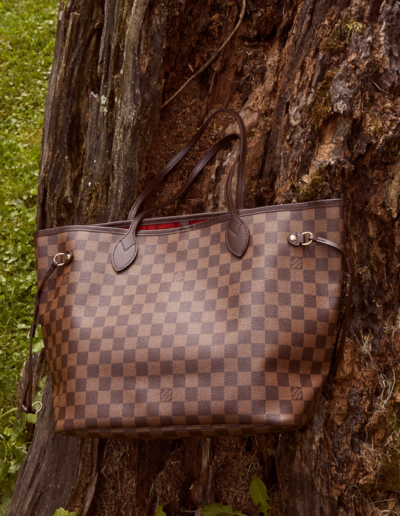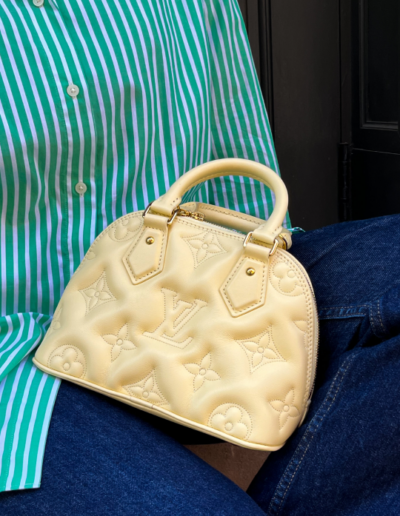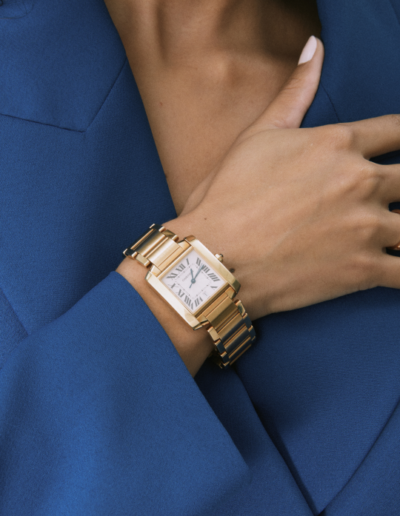DESIGNER 101
Rolex 101:
A History
By The Rebag Watch Team, Dec 7, 2020
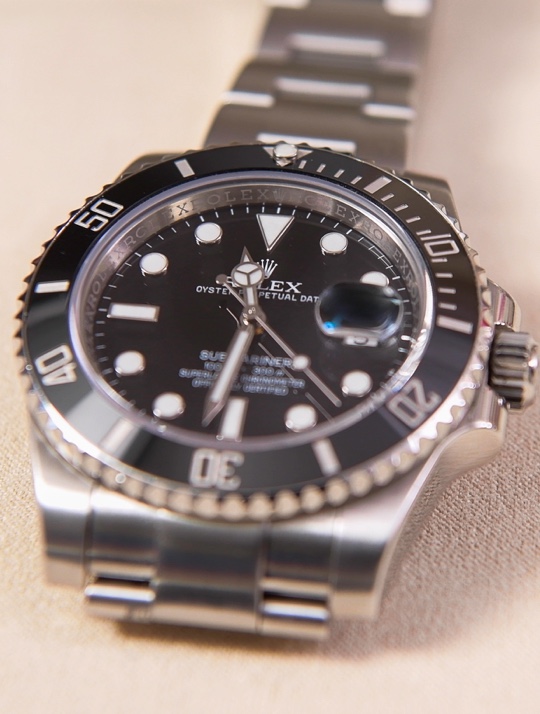
From its beginnings in 1905 through today, Rolex has always stood
for quality and performance. As one of – if not the most iconic watch brand in the world today – Rolex has captivated both collectors and non-collectors alike and has become a household name synonymous with luxury, precision, and success.
The History of Rolex
Hans Wilsdorf was a man with a vision, a vision that was a novelty when most men carried pocket watches. That vision was to create a brand of precision wristwatches. Hans’ idea became a reality in 1905 when, at the age of 24, he founded the Wilsdorf and Davis company with his brother-in-law Alfred Davis in London, England. In 1908, Hans was struck by inspiration while riding on a double-decker London bus, and the brand name “Rolex” was born.
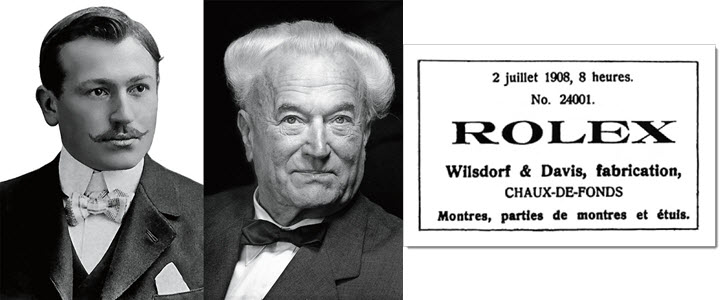
Hans Wilsdorf and Alfred Davis, Source Unknown
In 1910, Rolex became the first wristwatch to ever receive the coveted Swiss Certificate of Chronometric Precision from the Official Watch Rating Centre in Bienne, Switzerland. The year 1915 saw the company move to Geneva, Switzerland after the end of World War I. Then, in 1926, Rolex produced the first waterproof watch named the “Oyster.” The Oyster design sealed the watch movement from dust and moisture, thus solving two of the largest issues plaguing watches at the time. Famously, in 1927, Rolex partnered with their first ambassador, British swimmer Mercedes Gleitze, who swam the English channel while wearing a Rolex Oyster on her wrist. After Mercedes’ successful swim, Rolex took out a full-page ad in the Daily Mail proclaiming the watch’s performance and accuracy during the 10-hour swim.
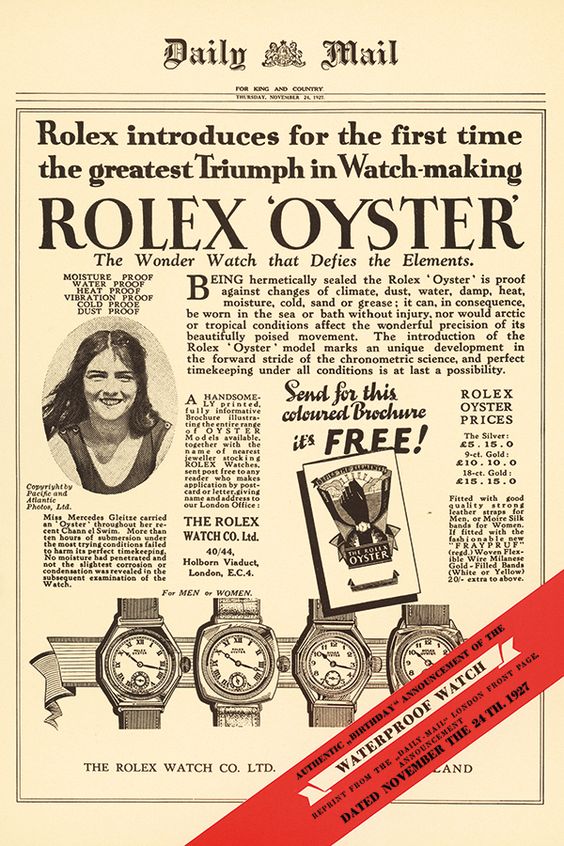
Ad for the Rolex Oyster in the Daily Mail, Source Unknown
Rolex again was at the cutting edge of watchmaking technology when in 1931, they patented a self-winding mechanism featuring a 360-degree winding rotor that would become the basis for all modern automatic movements. This became known as the Rolex “Bubble Back,” owing to the domed case back used to accommodate the automatic movement.
Rolex continued to build its image as a rugged, precise, and indispensable watch brand by establishing relationships with explorers and world-record setters. In 1933, Rolex watches were worn by the first crew to fly over Mount Everest, and in 1935, racing motorist Sir Malcolm Campbell wore a Rolex watch when he set his land speed record.
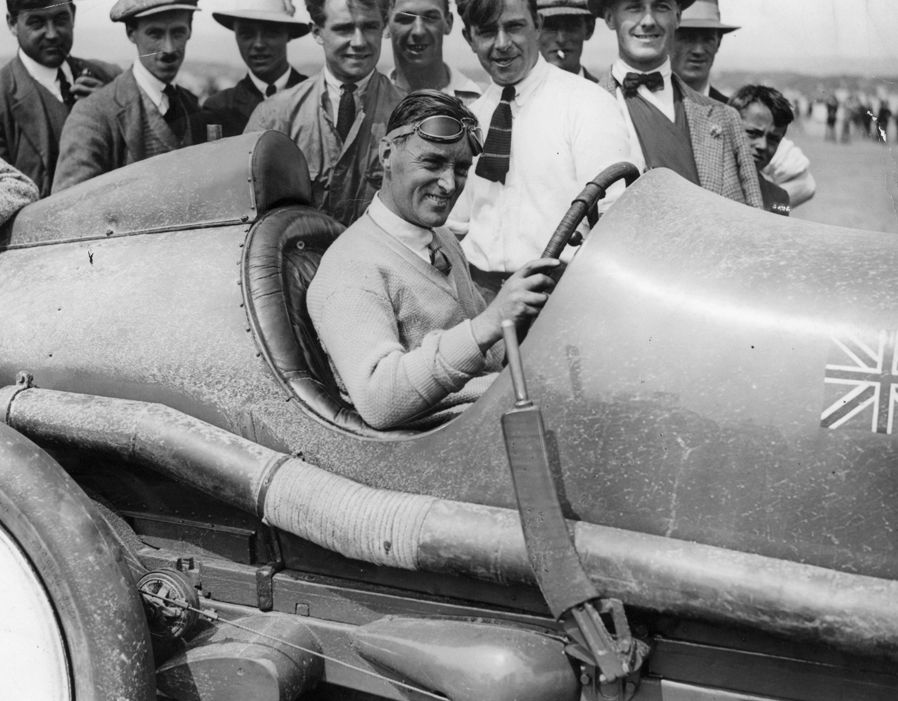
Caption: Racing motorist Sir Malcolm Campbell was a Rolex wearer himself Source Unknown
Once more in 1953, Rolex launched the Rolex Explorer to celebrate the successful ascent of Mount Everest by Sir John Hunt.
In 1960, a specially-designed experimental Rolex Oyster Perpetual Deep-Sea Special was strapped to the outside of the first submersible to successfully dive the Mariana Trench, a world-record depth of 10,916 meters, or 35,814 feet. Many more examples further cement the Rolex name in history books, and this relationship continues to this day. A more recent example is when James Cameron’s “vertical torpedo” sub performed a Mariana Trench dive in 2012, with a specially designed and manufactured Rolex Oyster Perpetual Sea-Dweller Deep Sea Challenge watch, which was seen in the 2014 movie “DeepSea Challenge.”
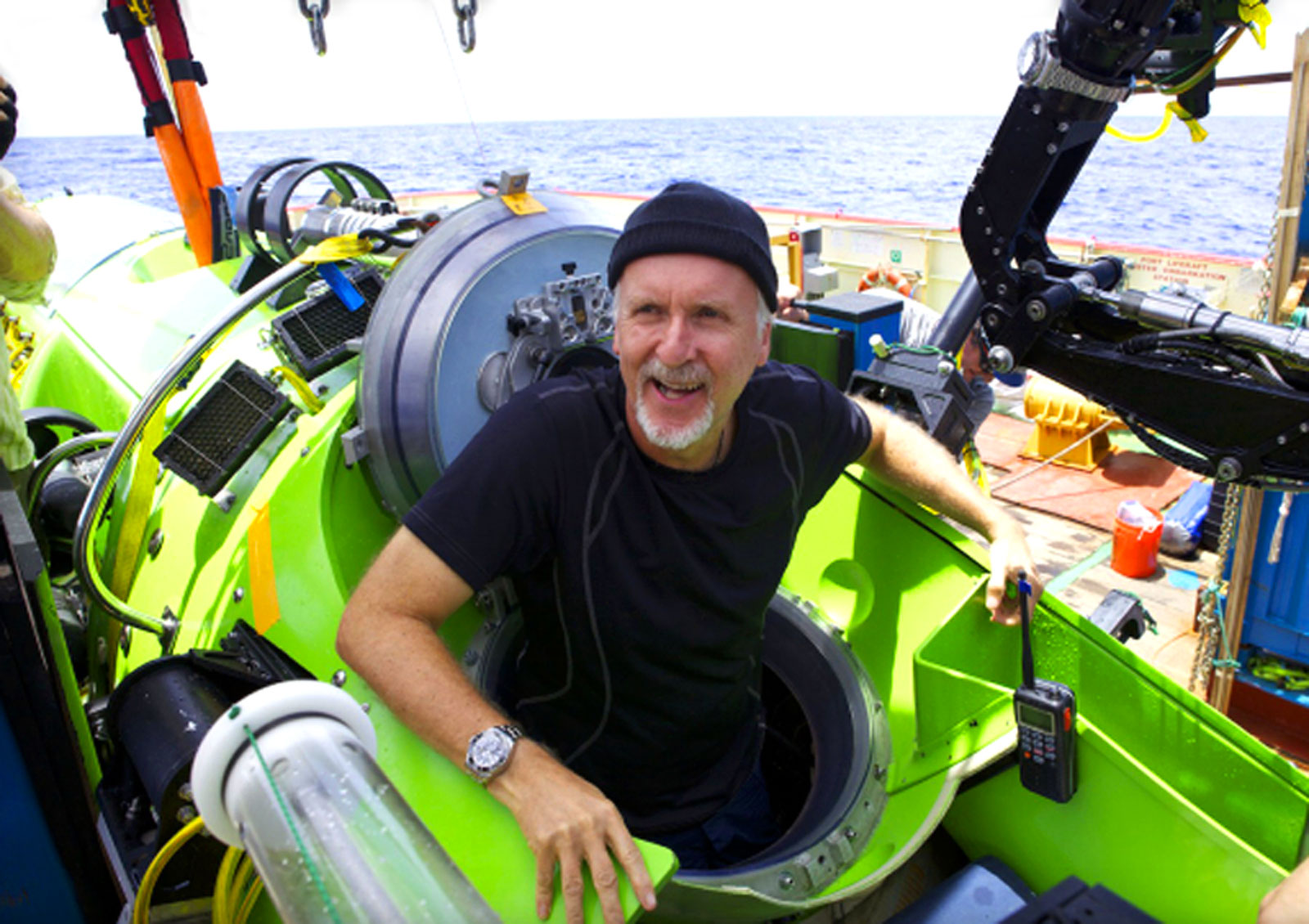
James Cameron & the Rolex Oyster Perpetual Sea-Dweller Courtesy of The Watch Lounge
This was not the first time that a Rolex watch was worn on film. Perhaps most notable is Sean Connery’s Rolex Submariner in 1962’s “Dr. No,” the first silver screen appearance of James Bond.
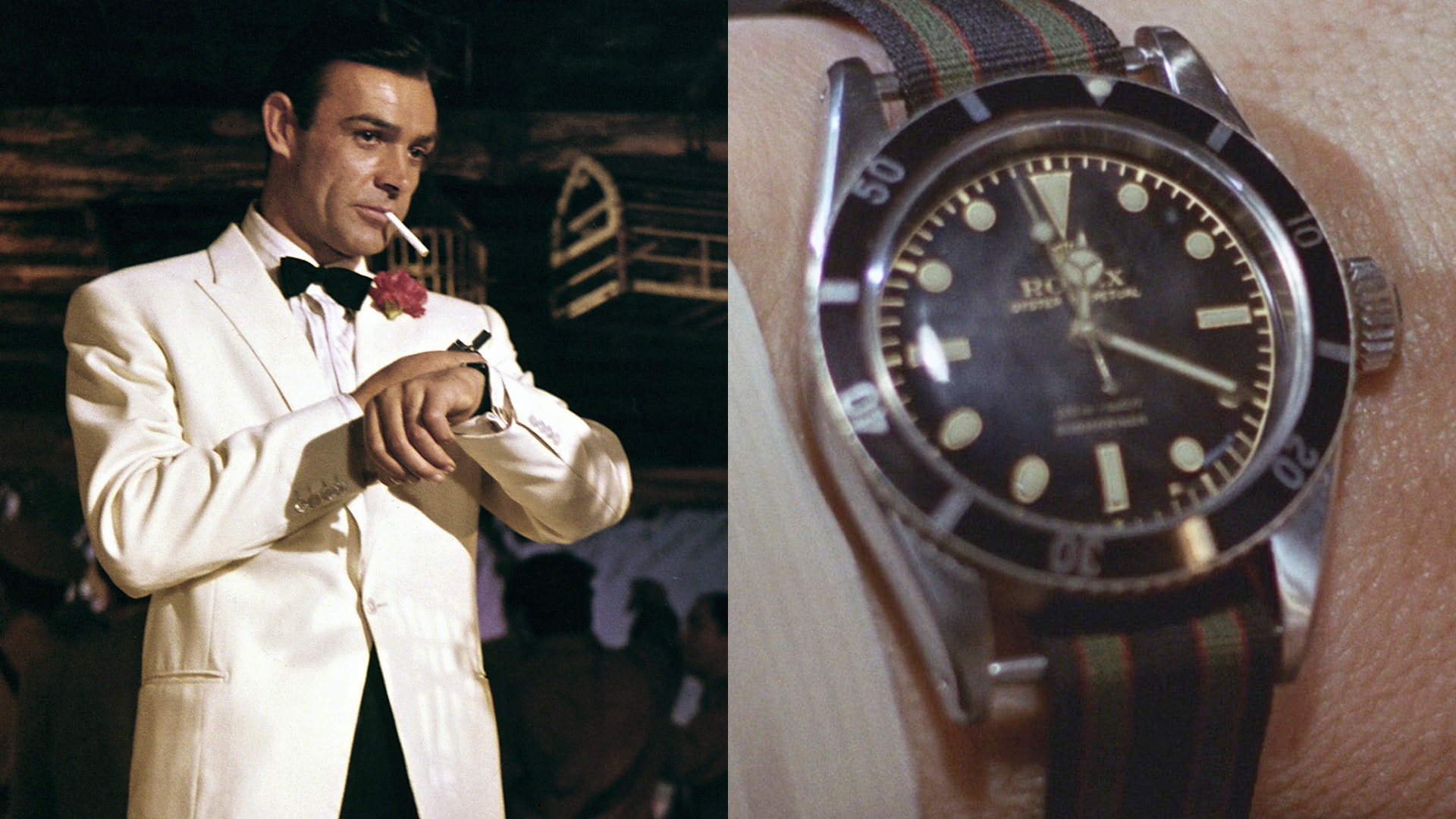
James Bond & His Rolex Watch, Source Unknown
Other notable historic Rolex watches include the Datejust, which was introduced in 1945. It was the first watch in Rolex’s collection to feature an automatic date change.

The Rolex Datejust, Courtesy of The Jewellery Editor
The year 1953 saw the iconic Rolex Oyster Perpetual Submariner launch, which had a waterproof rating of 100 meters, or 330 feet.
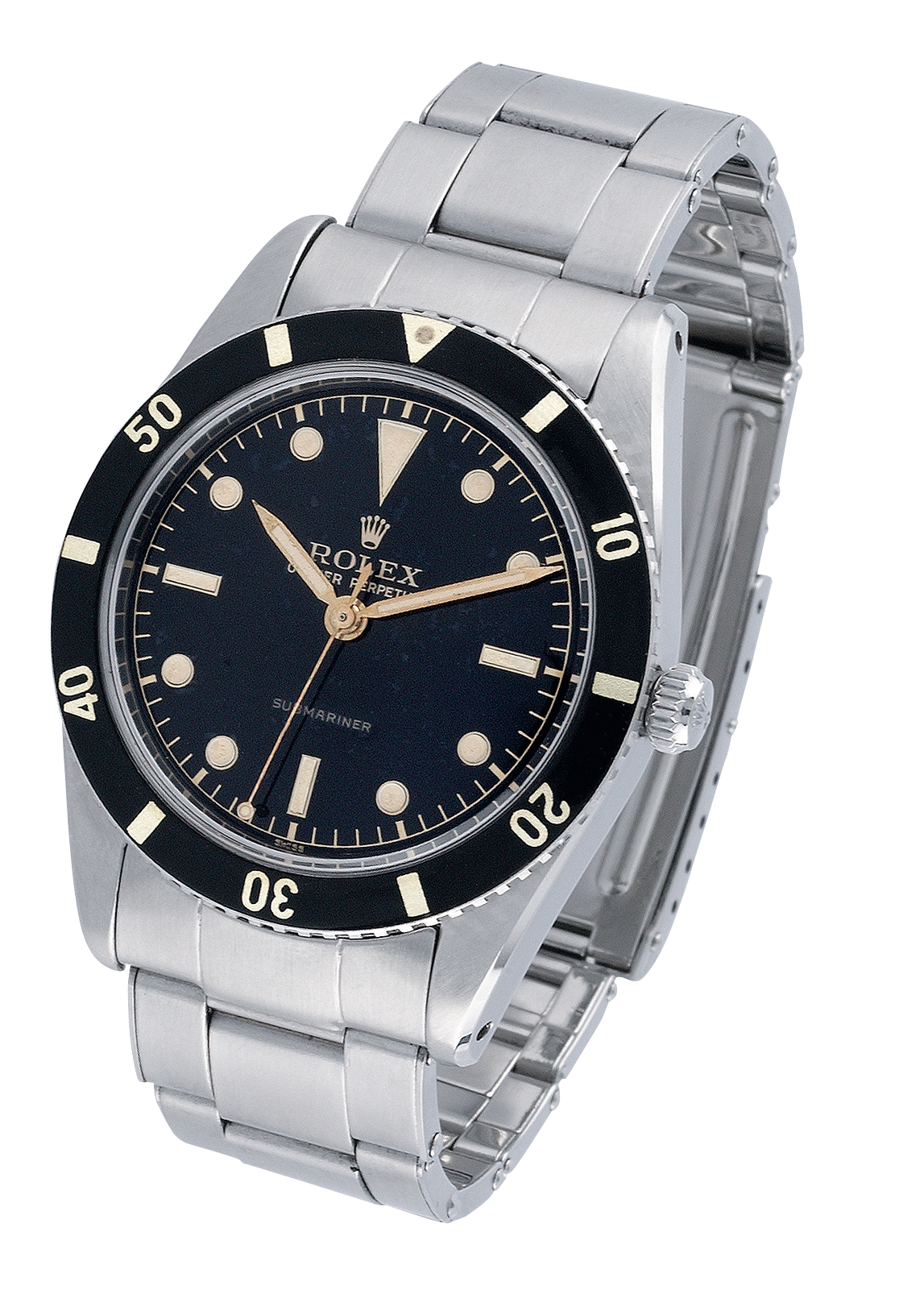
The Rolex Oyster Perpetual Submariner Courtesy of Watchtime
The 1956 introduction of the Rolex Day-Date (later known as the Rolex President) featured the automatic changing of both the day and date.
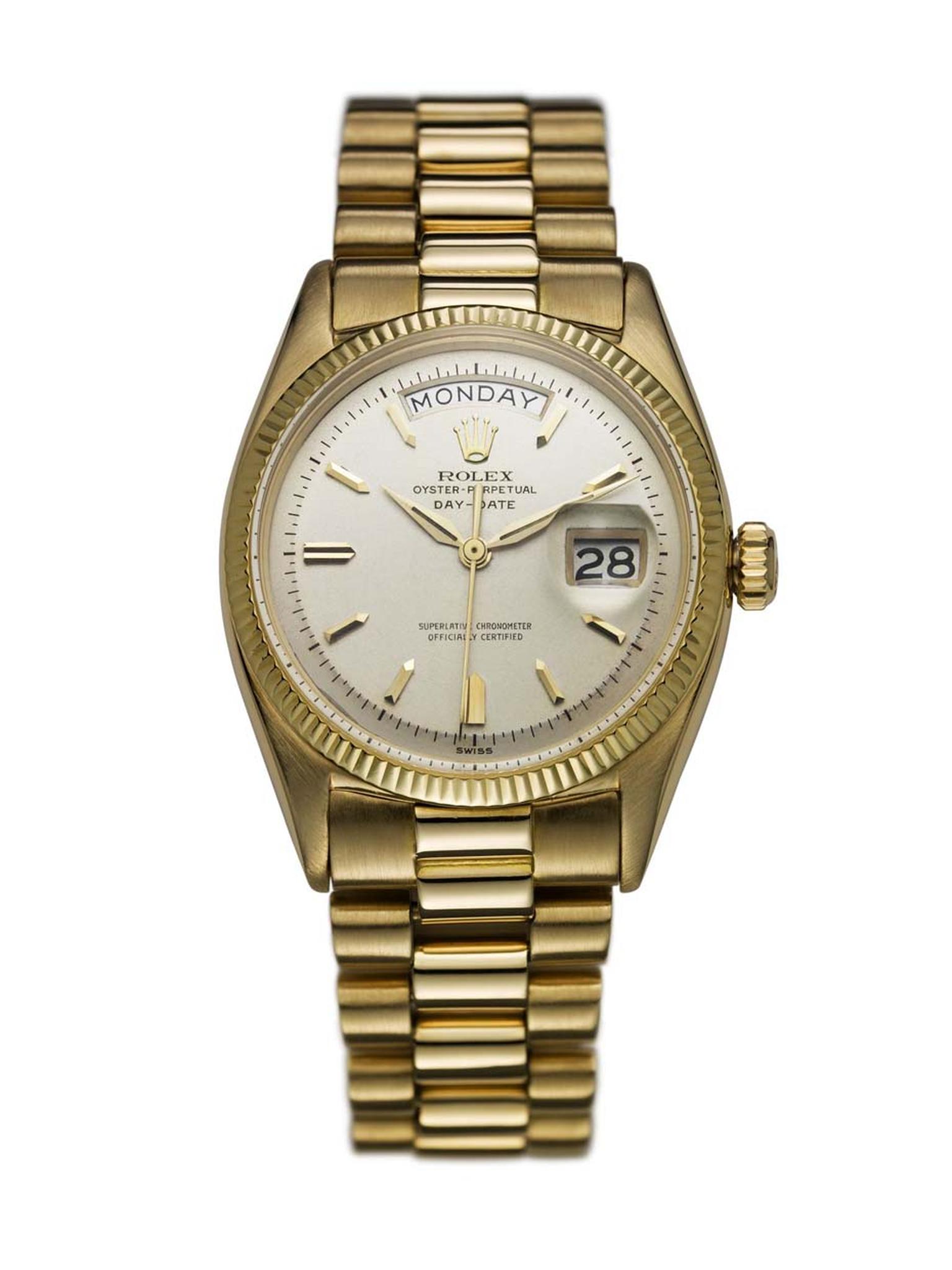
The Rolex Day-Date, or the President Courtesy of The Jewellery Editor
Sizing Breakdown
Rolex watches come in a variety of sizes. While different models have gone up or down in case dimensions over the years to accommodate various wrist sizes and tastes, they mainly fall between these dimensions:
- Men’s Large Size – 43mm
- Sports Size – 39mm, 40mm, 41mm, 42mm
- Gents Size – 36mm
- Unisex Size – 34mm
- Mid Size – 31mm
- Ladies Regular Size – 26mm, 29mm
- Ladies Baby Size – 25mm
Materials and Hardware
Rolex has made a name for themselves by creating some of the most accurate mechanical timepieces available. They have also been at the forefront of innovation with materials designed to provide the best-looking and most durable watches.
In this endeavor, Rolex has heavily invested in using the best quality materials and going so far as making their own platinum and gold alloys.
Some modern examples of this include Rolex’s introduction of 904L surgical steel in 1985 for the Sea-Dweller case, which was an improvement from the industry-standard 316L. This advancement in materials meant that the new case would have a brighter overall appearance than a case made from 316L steel. More importantly, it would resist the corrosive elements of saltwater better. Later, in 2000 Rolex once more rocked the watchmaking world by introducing their patented Parachrom hairspring made of an alloy of niobium, zirconium, and oxygen, negating magnetic fields’ effects on the watch movement, which can adversely affect timing keeping. Lastly, in 2007 Rolex introduced their patented Cerachrom Ceramic for use as bezel material in specific Professional watches. Fashioned from extremely hard ceramic material, Cerachrom is highly scratch resistant, and its color stays vibrant because it is unaffected by ultraviolet rays.
Special Editions & Color Range
Breaking from most other modern luxury watch houses, Rolex does not currently make numbered limited-edition or collaboration pieces. While they may have done so in the past, the one modern exception is the James Cameron & Rolex collaboration with their DeepSea edition, featuring a blue-to-black ombre dial.
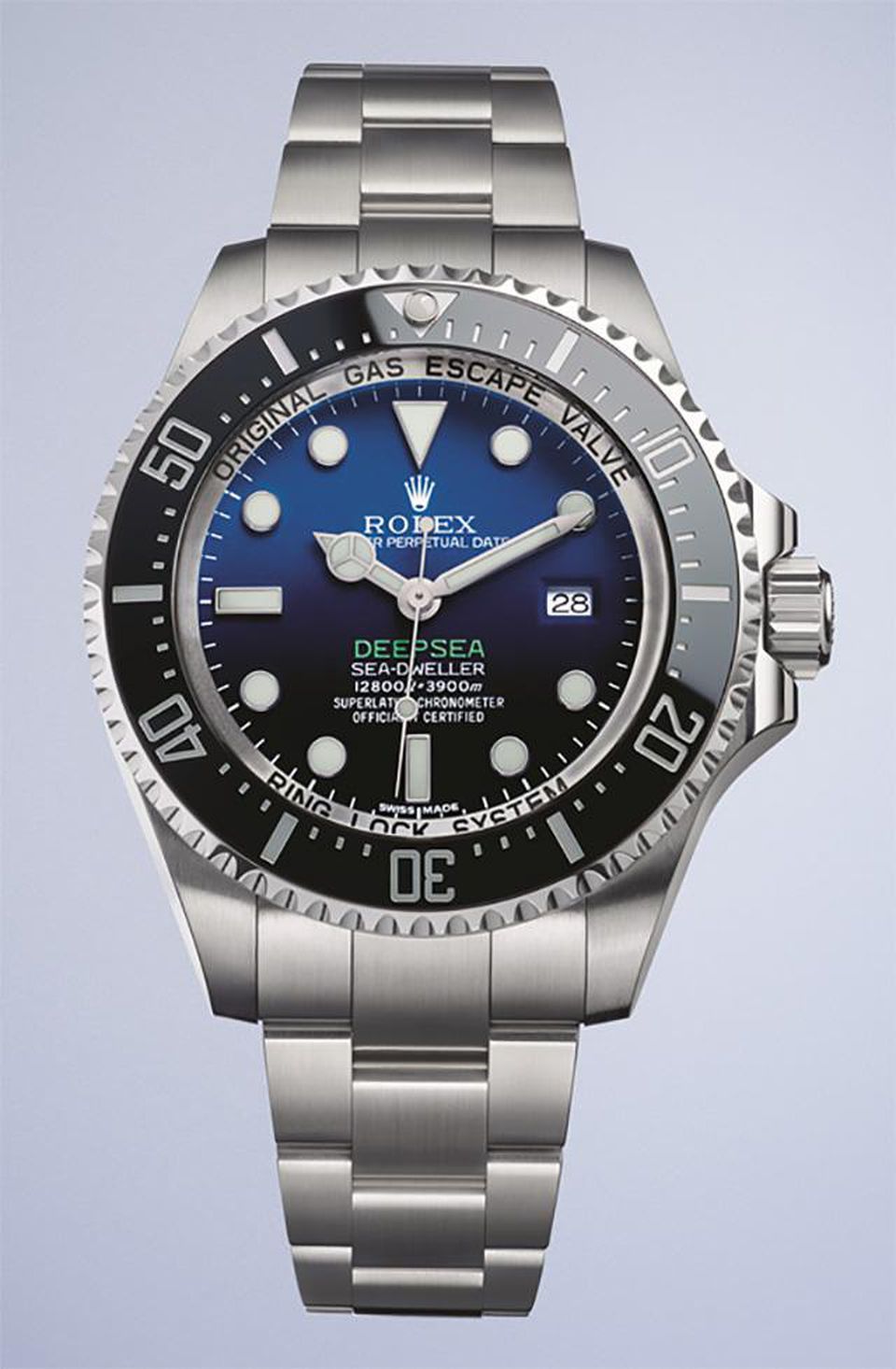
James Cameron & Rolex Collaboration, Courtesy of Forbes
Rolex now chooses to focus on commemorative and novelty watches. These highly sought-after commemorative models tend to focus on milestone anniversary watches, such as 2003’s 50th anniversary edition Submariner, nicknamed the “Kermit” for its bright green bezel.
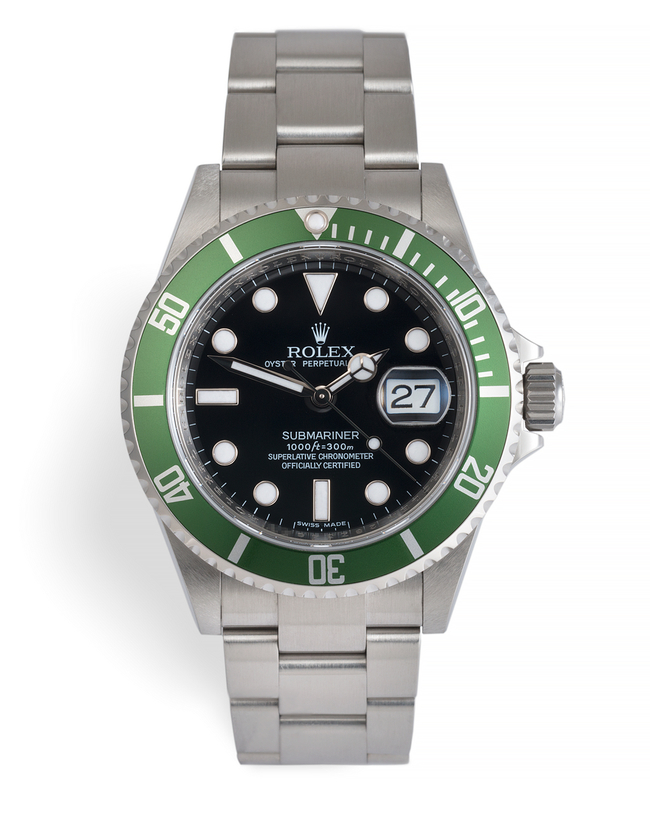
The Kermit, Courtesy of Watch Club
In 2005 Rolex celebrated the 50th-anniversary of the GMT-Master II.
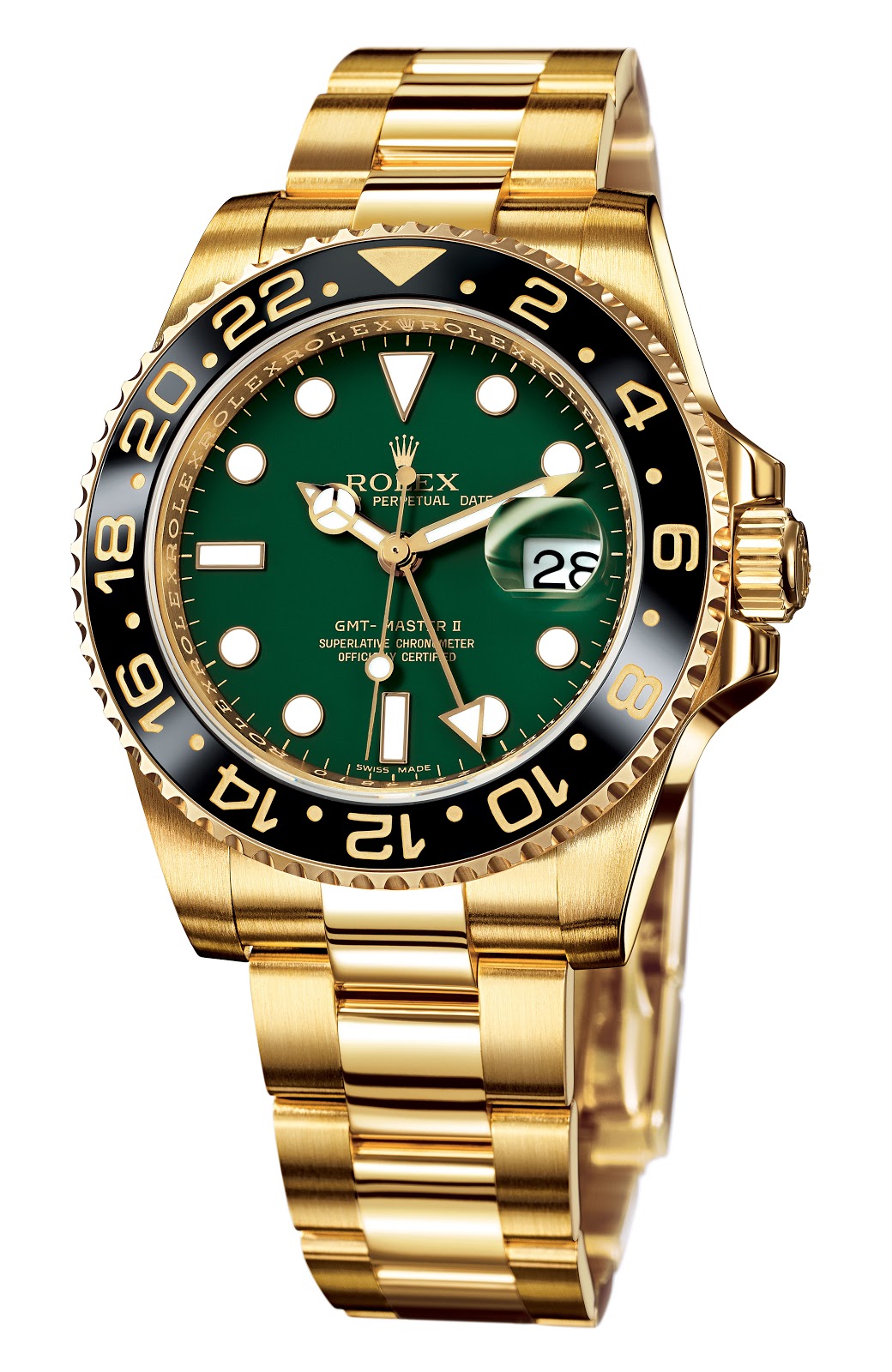
Rolex GMT-Master II, Source Unknown
2007 was the year the Rolex Milgauss was honored with its 50th anniversary edition.
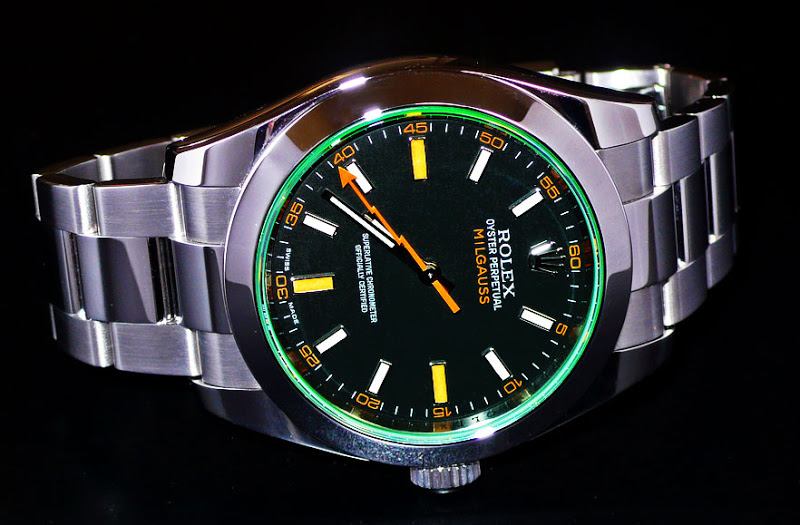
Rolex Milgauss, Source Unknown
And Rolex’s famous Explorer II saw the release of it’s 50th anniversary edition in 2011
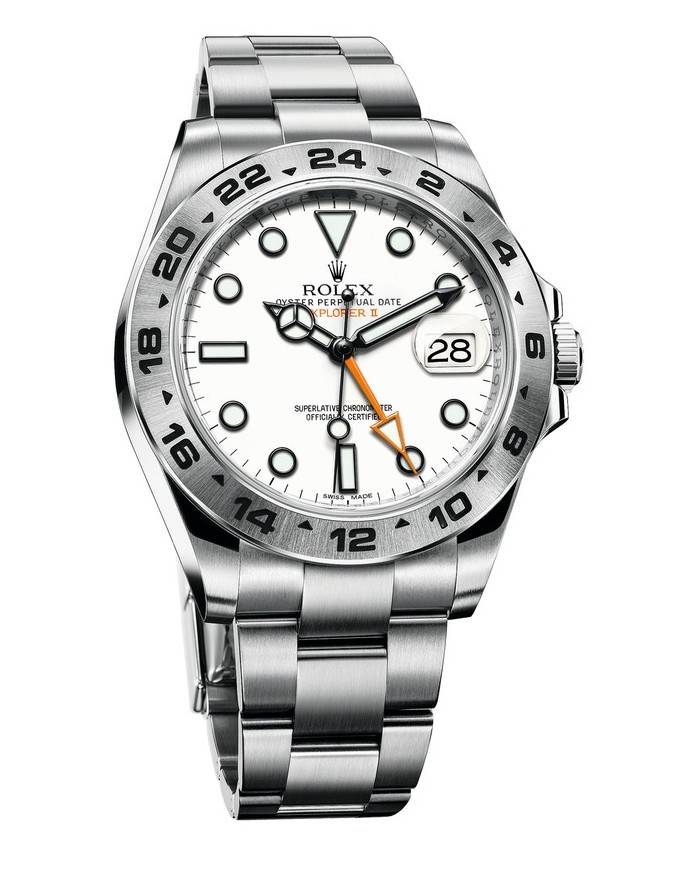
Rolex Explorer II
While 2013 was the year of the anniversary edition of the Rolex Cosmograph Daytona in platinum.
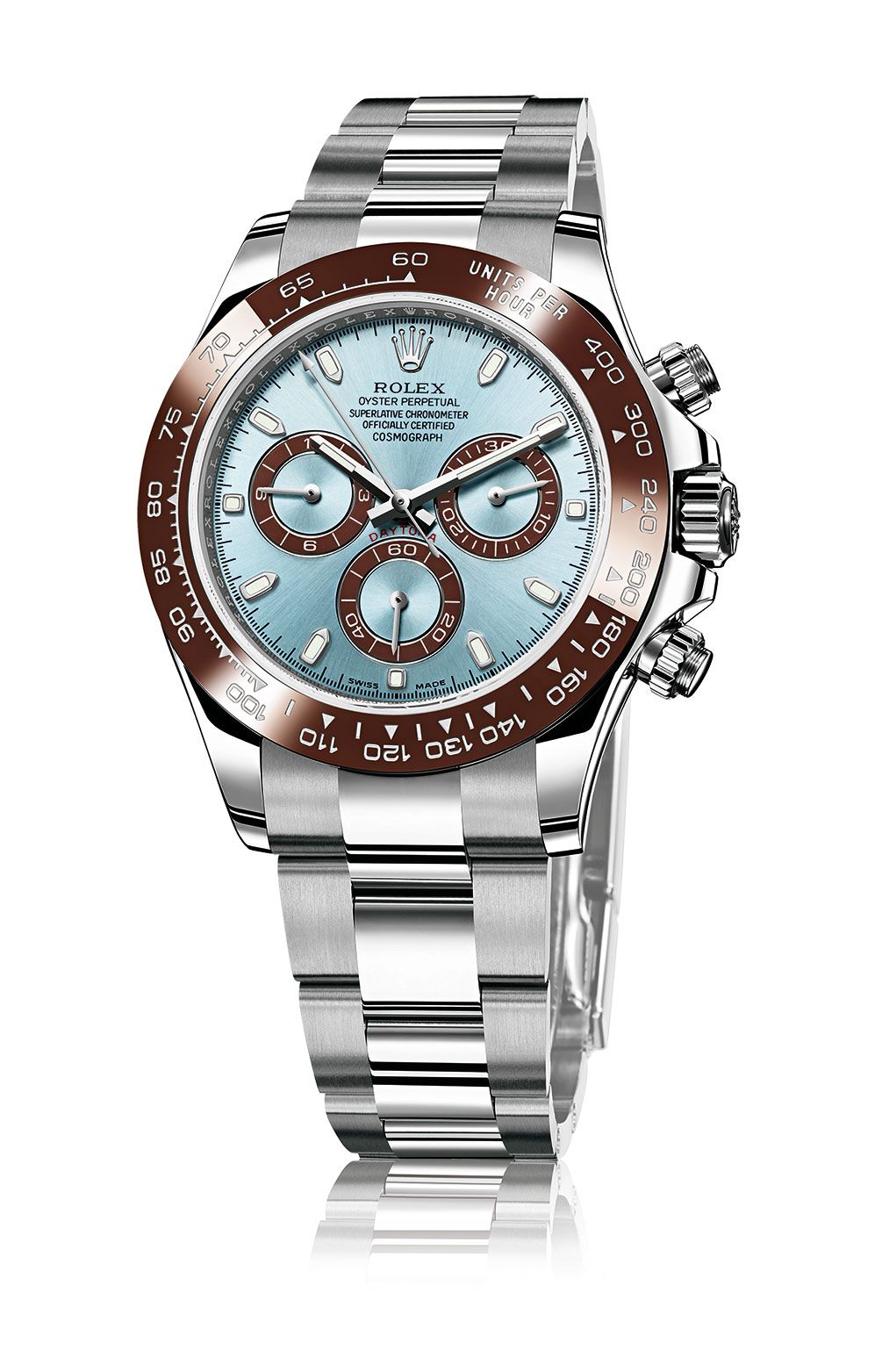
Rolex Cosmograph Daytona, Source Unknown
The Novelty pieces, which tend to showcase Rolex’s stone setting and jewelry skills, are produced in smaller numbers and command very high prices on the secondary market. An example is the incredible Daytona Cosmograph Rainbow, first introduced in 2012.
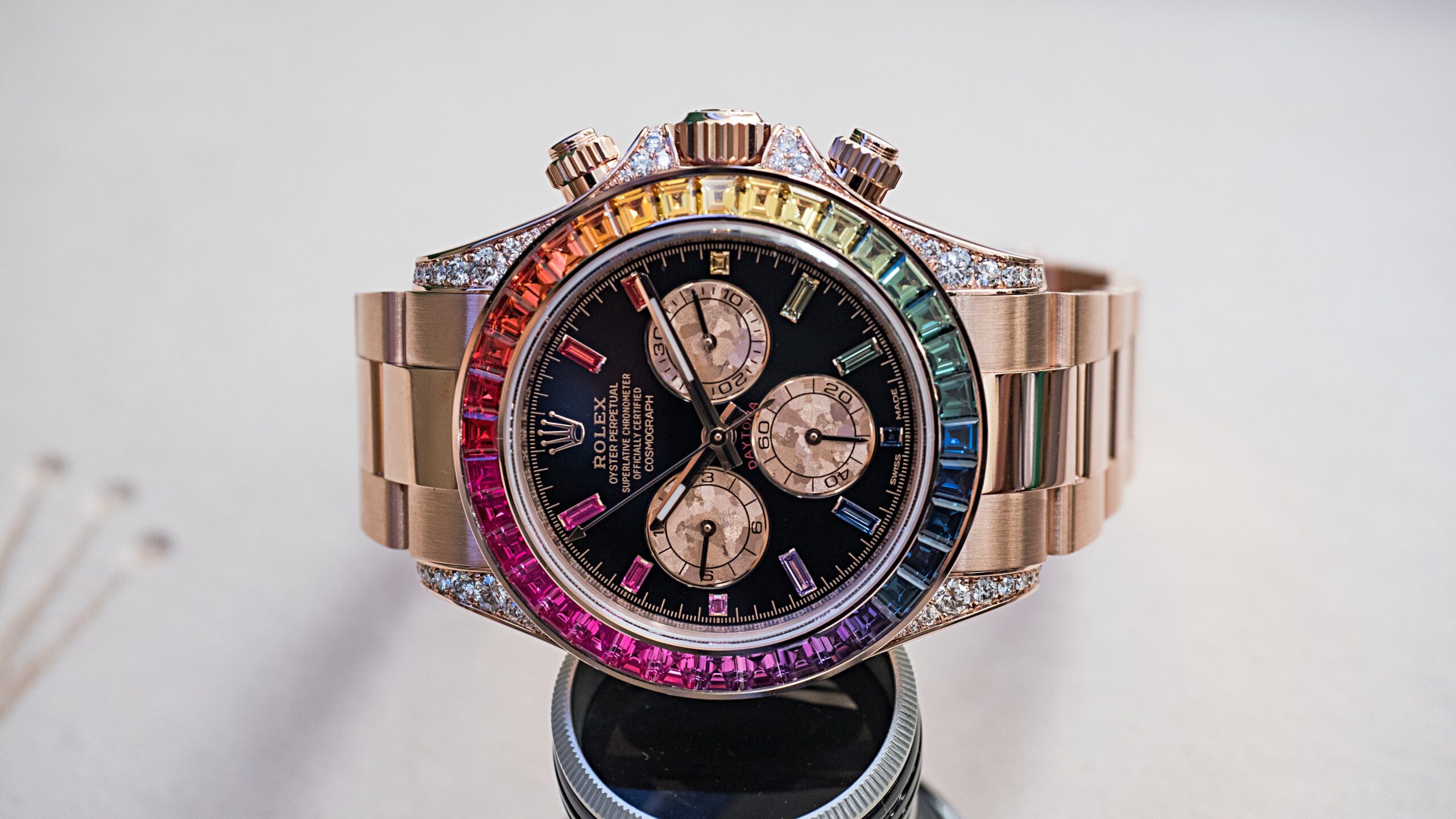
Daytona Cosmograph Rainbow, Courtesy of Hodinkee

